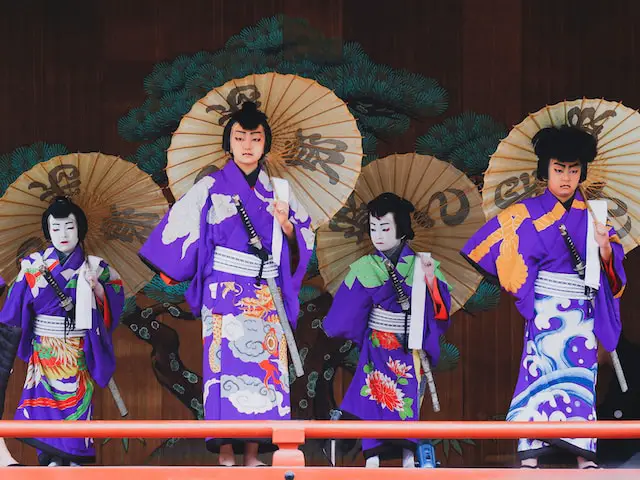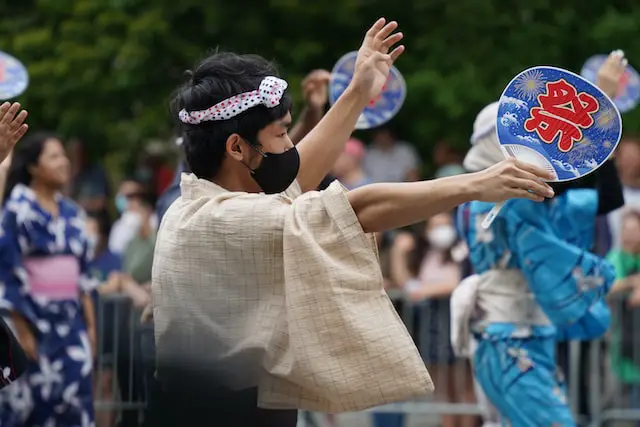Welcome to the marvelous world of Japanese culture, a vibrant tapestry threaded with rich traditions and unique customs that create a fascinating blend of old and new. Japan is not only renowned for its technological prowess and evocative landscapes, but also for its unique traditional etiquette that permeates every aspect of daily life.
Understanding and respecting Japanese customs is an integral part of immersing oneself in this exotic charm. High regard for discipline, harmony, and social order is deeply entrenched in Japanese society and is reflected in every interaction. Whether it’s courteous greetings, contemplative shrine visits, or the elegance of dining etiquette, every practice embodies values of respect, humility, and purity.
As travelers, embracing these customs not only enriches our experiences but also reflects our respect for this diverse culture. Join us, as we unfold the etiquette maneuvers that would make your journey to Japan even more enjoyable and profound.
Respectful Greetings in Japan: The Concept of ‘Ojigi’
Hello global wanderlusts! One cannot talk about travel in Japan without touching upon ‘Ojigi’, which is essentially bowing in Japanese culture. This distinguishing gesture is deeply rooted in the Japanese way of life and is a symbol of respect.
In Japan, bowing communicates various messages, including greetings, gratitude, apologies, and requests. You bow to express your acknowledgment of others. Understanding and following this manner is crucial to make your journey in Japan more enjoyable and respectful.
There are mainly three types of bows in Japan, each conveying a different level of respect. These include ‘eshaku’ (15 degrees bow) for casual greetings, ‘keirei’ (30 degrees bow) for a more formal acknowledgment, and ‘saikeirei’ (45 degrees bow) used in very formal or solemn occasions.
Usually, ‘eshaku’ would suffice for travelers during day-to-day interactions. However, if you’re attending a more formal occasion or meeting someone important, ‘keirei’ or even ‘saikeirei’ might be appropriate. It’s all about the situation and the relative status of the people involved.
Many travelers worry about bowing accurately, but remember it’s the thought that counts. The Japanese people usually appreciate the fact you’re doing your best to respect their tradition. Regardless of your bow’s perfection, your gesture of respect and politeness will certainly be well received.
Embarking on a journey to Japan becomes an enriching experience when you embrace the local customs. Happy bowing!
Rules for Visiting Shrines and Temples
One of the enriching experiences of visiting Japan is immersing yourself in its spiritual heritage by exploring its plentiful shrines and temples. However, awareness and adherence to the unique etiquette surrounding these centers of worship is key to a respectful visit.
The first step when entering these sacred spaces is the purification ritual. At the entrance, you will find a ‘temizuya’ or water pavilion. Take a ladle with your right hand, fill it with water, and rinse your left hand. Then switch hands and rinse your right hand. Pour some water into your left hand to rinse your mouth, spit it beside the fountain, never directly back into it. Lastly, cleanse the handle of the ladle by letting the remaining water run down it before returning it to its place.
At the shrine, it’s customary to give a small offering, usually a coin, and then say a silent prayer. Bow twice, clap your hands twice, then bow once more. This signifies respect and appreciation to the deities.
At Buddhist temples, burn incense and place it in the provided incense burner, then fan some smoke towards yourself as it is believed to have healing properties. Inside the temple, do not touch the Buddha statues or other religious objects as it’s considered disrespectful.
Remember that these are places of worship and peace, so maintain an air of reverence. Avoid loud noises, ensure your mobile is on silent and dress appropriately. Adherence to these time-honored traditions is a reflection of your respect and understanding of Japanese customs, enriching the experience of your journey.
In all, visiting the shrines and temples centers in Japan demands a thoughtful blend of cautiousness, curiosity, and respect. Embark on this unique experience, and find yourself unravelled in the serenity and depth of Japanese culture.
Eating Etiquette: Understanding Japanese Dining Customs
Food is an integral aspect of culture and Japan is no exception. Familiarizing oneself with Japanese dining etiquette is key to fully immersing oneself and appreciating the local cuisine.
When it comes to sushi, avoid drowning it in soy sauce. Also, it’s customary to eat sushi with your fingers, despite the prevalence of chopsticks. While sake-drinking is a communal event, it’s rude to pour your own. It is accepted for you to pour for others and, in turn, you should allow others to pour for you.
Chopstick manners are particularly important. Never use chopsticks to pass food to another chopstick directly as it’s linked to Japanese funeral customs. Also, be careful not to stick the chopsticks vertically into a bowl of rice. It is essential to respect these customs, not only to show politeness but also to respect their traditions.
In conclusion, Japanese dining customs are complex. To enjoy the authentic experience fully, it’s essential to educate oneself about proper table manners and etiquette. This understanding creates an engaging experience, allowing travelers to comprehend the true essence of Japanese culture.
Onsen Etiquette: Hot Spring Baths In Japan
On your journey to explore the beautiful landscape of Japan, it’s almost impossible not to stumble upon an ‘onsen’ or a traditional hot spring bath. Acquainting yourself with the unique etiquette around this traditional, revered practice will enhance your onsen experience tremendously, while showing respect to the Japanese culture.
Before entering an onsen, always remember to start with a thorough cleaning in the adjacent shower facilities. The onsen water needs to be kept as clean as possible, and every visitor is expected to join the effort. The correct process is to wash, rinse and also wash your hair before soaking in the bath.
Moreover, neatness and hygiene must continue to be respected inside the bath. Items such as towels or shampoo should never touch the onsen water, and swimming or splashing is considered disrespectful. Most onsens are entirely enjoyed in silence, to allow everyone to soak in peaceful introspection.
Upon exiting the onsen, let the rich minerals from the water sink into your skin naturally rather than washing them off immediately. Finally, remember that many onsens are separated by gender, and nudity is often an integral part of the onsen culture. While it might feel unconventional to some, it’s an age-old tradition that embodies the Japanese concept of naturalness and simplicity.
Affording the chance to appreciate the richness of Japanese public baths, understanding onsen etiquette is a small step that can significantly enhance your cultural experiences in the land of the rising sun. So, when you travel to Japan, let the hot spring baths in Japan offer you not just a relaxing soak, but also a precious peek into the profound serenity of Japanese traditions.
The Art of Gift Giving (omiyage) and Receiving Presents
If one element of Japanese culture speaks to its deep-seated values of thoughtfulness and respect, it is the custom of giving and receiving gifts. From elaborate procedure to the attached sentiments, each aspect of this cultural practice resonates with a deep cultural wisdom propagated through generations.
In Japan, a ubiquitous form of gift-giving known as ‘omiyage’, meaning souvenir, takes precedence. Unlike the casual gifting customs of many Western cultures, omiyage is often a necessary gesture when returning home or visiting friends, family, or co-workers after a trip. The purpose of this souvenir isn’t simply to showcase the places you’ve traveled, but to acknowledge that you remembered your loved ones during your journey.
The intricate etiquettes extend to gifting beyond omiyage as well. Gifts are given on countless occasions, from New Year and birthdays to hospital visits and business meetings. When presenting a gift, use both hands as it signifies respect. Similarly, when receiving a gift, it is polite to deny it once or twice before finally accepting it humbly.
Paying attention to such details not only displays your intention of respecting Japanese customs but also contributes to a richer cultural understanding. Remember, it’s not about the value of the gift but the sincerity of your heart that’s most important in such practices.
Indeed, ‘omiyage’ and the larger etiquette of gift-giving in Japan are filled with beautiful lessons of mindfulness, consideration, and respect towards others.
Understanding Silence and Non-verbal Communication
In Japanese culture, silence is not merely the absence of noise. It is indeed a powerful and deeply respected form of communication. Often considered as a sign of respect and thoughtfulness, silence enables one to listen, reflect and show consideration towards others.
Unlike many Western cultures where silence can be seen as awkward, in Japan, it bears significant weight and meaning. Hence, embracing moments of quiet and understanding their value can immensely enhance your decision-making and communication abilities in Japan. It can also save you from misunderstandings and uncomfortable situations.
Non-verbal communication also carries substantial importance. Gestures, body language, and facial expressions can often communicate more than words ever could. Essential nonverbal cues, as subtle as a slight bow or avoiding direct eye contact, can relay respect and deference. It is critical to pay close attention to these silent messages when interacting with local people, as they can pave the way to deeper understanding and appreciation of Japanese customs.
Such delicate nuances mark the distinctiveness of Japanese culture. Therefore, when traveling to Japan, gaining a thorough understanding of this silent language and the significance of non-verbal communication will surely enrich your experience. Ensuring others there feel respected and comfortable with our actions and reactions speaks volumes about our respect for their culture.
Learning to embrace silence and understanding the power in non-verbal communication in Japan can be a transformative experience. This mastery can provide a unique lens to appreciate Japanese culture, and be a part of their world in a more profound way.
Conclusion
Understanding and respecting the culture of a place truly enhances your overall travel experience. Japan, with its rich tradition and unique etiquette, provides a distinct cultural experience exemplifying the spirit of the land.
From the respectful greetings encapsulated in the art of ‘Ojigi’ to the sacred practices around visiting shrines and temples, the beauty of Japanese culture is evident in its harmonious undertones. The dining etiquette in Japan is a culinary journey by itself. It’s more than just eating sushi; it’s about appreciating the manner in which it is served, and the rituals that accompany sake drinking and mastering the art of using chopsticks.
Paying a visit to public onsens is another delightful encounter that requires one to understand and adhere to certain cultural customs, while the unique practice of gift-giving furthers this cultural exploration. It’s not just a joyous act, but a ritual in itself that reflects Japanese generous spirit. The ‘omiyage’ protocol is especially worth noting.
The role of silence and non-verbal cues in the Japanese communication landscape cannot be overstated. What might initially seem distant or cold could, upon closer observation, manifest as a sign of utmost respect and contemplation.
We encourage every intrepid traveler planning to explore the “Land of the Rising Sun” to immerse themselves in the cultural ethos, and continue their pursuit of understanding and respecting the local customs. It’s these nuances that make the travel experience more enriching and fulfilling, turning the journey into a timeless narrative of cultural discovery.
Farewell, traveler. May your journey be one of many fascinating insights and unforgettable stories.





